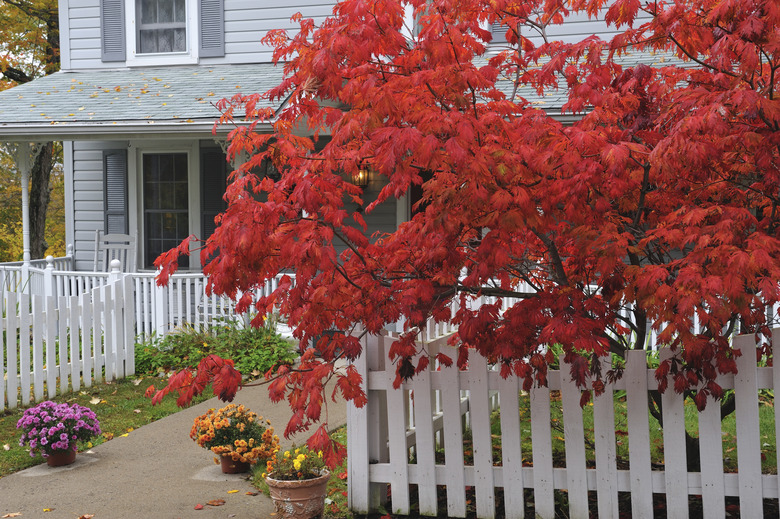4 Reasons There Are White Spots On The Bark Of Your Maple Tree
We may receive a commission on purchases made from links.
Maple trees are widely planted and much beloved landscape trees in the United States, and there are multiple types. After going to the trouble of planting and caring for a maple (Acer spp.), you want to immediately address any disease or problems your tree may have, whatever its variety. If unchecked, disease can result in defoliation, dieback, and even death. White spots on a maple tree can indicate an insect infestation or a fungal disease or may indicate no problem at all.
1. Cottony Maple Scale
1. Cottony Maple Scale
An insect known as cottony maple scale can target silver maple trees (A. saccharinum), although other maple trees can also attract these small scales. Your first indication of cotton maple scale is likely to be white cottonlike egg sacs attached to branches, produced by female scales. If there are multiple sacs, they may resemble popcorn.
The eggs hatch in early July, and the young scale nymphs begin feeding off the leaves' undersides. The scales excrete a sugary substance called honeydew, which drops onto the branches and leaves below. One indication that you have a cottony maple scale infestation is if leaves, plants, or other objects beneath the tree are covered with a sticky substance. This is sometimes also accompanied by a black sooty mold.
Experts recommend that you take no action if you suspect cottony maple scale, as these insects are usually controlled by natural predators.
2. Eutypella Canker Fungus
2. Eutypella Canker Fungus
Sometimes, a canker forms in an area that has been pruned or cut. If you dislodge the bark a bit and see white or tan fungal mats, you'll know your tree has developed eutypella canker. This is a fungus (Eutypella parasitica) to which black maple (A. nigrum), Norway maple (A. platanoides), red maple (A. rubrum), sugar maple (A. saccharum), and silver maple are susceptible.
The edges of the canker may be sunken or flat, and over time, the bark covering it will slough off. Cankers are very slow-growing but can reach 5 feet across. If left unchecked, the fungus will kill the tree's phloem (vascular cells that transport nutrients) and the cambium (young, undeveloped vascular cells). Eventually, it will affect the sapwood itself, causing wide-ranging decay until the tree is weakened and may topple in a high wind.
To avoid developing eutypella canker, practice good pruning technique by cutting close to but not into a branch collar. Further, avoid leaving a stub through which the fungus can enter. If you see a canker forming, use sharp, sanitized pruning shears to cut off the infected branch and dispose of it by burning or burial. If the canker is on the trunk itself, you can't do much about it; just monitor it to ensure that the tree does not become weakened enough to be a danger.
3. Slime Flux or Bacterial Wetwood
3. Slime Flux or Bacterial Wetwood
Several types of hardwood trees, including maples, can develop bacterial wetwood, also called slime flux. The tree bleeds and oozes a slimy fluid that when dry appears pale yellowish on the bark.
This kind of fungus enters the tree through a cut or wound anywhere on the trunk, roots, or branches and is more common during drought. This disease cannot be cured, but you can prevent it with proper pruning practices.
4. Lichens May Be the Culprit
4. Lichens May Be the Culprit
Lichens grow on many types of hardwood trees, creating white bands across the bark or flaky white or yellow lesions. Part fungus, part alga, lichens are more likely to grow on bark in a sunny location, unlike moss, which prefers shade.
Lichens are harmless, as they just grow on the tree and do not enter its structure. You might notice lichens on both young, healthy trees and older trees in decline, but there is no need to take any action.
